¶ 1Leave a comment on paragraph 1 0Figure 1. Dick Higgins, “Intermedia Chart,” 1995. Courtesy Fondazione Bonotto, Fluxus Collection.
¶ 2Leave a comment on paragraph 2 0
Fluxus was an international movement of artists, composers, writers, and filmmakers who worked together primarily during the 1960s and 1970s. The group’s members are famous for their creation of ephemeral and genre-blurring “intermedia” artworks, provocative performance events, and what they dubbed the “Eternal Network”—an international syndicate of collaborating, agitating, pranksterish artmakers.
¶ 3Leave a comment on paragraph 3 0
The University of Iowa Libraries houses one of the most impressive collections of Fluxus art and ephemera in the United States, including works by internationally acclaimed artists Ken Friedman, John Cage, Dick Higgins, George Maciunas, Yoko Ono, Mieko Shiomi, Nam June Paik, George Brecht, Robert Filliou, and many others. The collection is the centerpiece of Alternative Traditions in the Contemporary Arts (ATCA), a project founded in 1982 by Estera Milman to preserve artifacts related to the post-World War II avant-garde.
¶ 4Leave a comment on paragraph 4 0
To date, Fluxus is widely considered one of the most significant art movements of the post-World War II era, and yet the group’s work remains by far the least available to readers in comparison with Pop, Minimalist, and Conceptual art.
¶ 8Leave a comment on paragraph 8 0
Multiples, performance scores, film reels, photographs, paper works of irregular dimensions—the list goes on. The ephemeral nature and multimedia-intensive quality of so much Fluxus art makes it inappropriate for conventional exhibition. Imagine yourself in a gallery space. Flux Year Box II would appear behind a plate glass case; you might view the work, but would not be free to read it. Now imagine yourself reading a book catalogue; it would offer secondary context and supplementary information, but could reproduce only a fraction of a single work alone, while most multimedia components would be lost. Maciunas’s work contains a novella-length body of content that very few have had the opportunity and privilege to read, view, and hear in full.
¶ 9Leave a comment on paragraph 9 0
In response to this challenge, we developed a plan to bring the work of an essential post-World War II art movement to larger audiences worldwide. The Fluxus Digital Collection (FDC) is one of the first comprehensive archives of the group’s artwork, ephemera, and criticism; it contains an interactive map of the movement’s innovative “Flux events,” digital 3D objects, documentary shorts, and secondary resources. Of course, no representation can replace the material object, but it can restore moving images, the reading experience, and audio components otherwise inaccessible to viewers. In this way, I hope the FDC might become an invaluable supplement to the physical collection.
¶ 11Leave a comment on paragraph 11 0
After launching the website in 2015, it became immediately clear that the collection offered a useful case study for developing long-term, open-source collaborations in digital humanities research involving librarians, faculty, students, and technologists.
¶ 12Leave a comment on paragraph 12 0
The project involved a substantial collaborative undertaking by partners including the Digital Studio, UI Libraries Special Collections (Sp. Coll.), Digital Research and Publishing (DRP), along with Digital Preservation and Conservation.1 Together we identified several intersecting workflows: (i) rights management, (ii) collection processing, (iii) conservation, (iv) photography and film, (v) 3D modeling, (vi) 2D scanning, (vii) digital preservation, (viii) website development, (ix) and website design. Notably, a single object might require several production workflows; the Fluxus Yearbox II, for instance, needed film, scanning, and photography. Documenting the metadata on digital files proved to be a challenging task, since many “Fluxkits” contain objects nested inside objects, and so on.
¶ 13Leave a comment on paragraph 13 0Figure 6. University of Iowa Libraries’ “Fluxus West Collection” forms part of ATCA and comprises the majority of works featured in the Fluxus Digital Collection. Photograph by Greg Prickman.
¶ 14Leave a comment on paragraph 14 0
Given the project’s complexities, it is imperative to recognize the contributions of librarians, technologists, and designers whose work counts as original research and invaluable support, beyond what I can provide the project. In a word, they do something I definitely cannot. Whatever “best practices” model we finally adopt for digital humanities research, it should carefully acknowledge and meticulously document individual contributions and shared labor. These key individuals built the FDC, along with an infrastructure for future archiving projects at UI Libraries:
Hannah Scates—Project Management
Nikki White—Programming & Development
Audrey Altman—Programming & Development
Heidi Bartlett—Design
Greg Prickman—Special Collections, Head
Emily Shaw—Digital Preservation
Candida Pagan—Scanning, Art Arrangement
Giselle Simon—Digital Conservation
Peter Balestrieri—Research Assistance
Graduate students in the New Media Poetics (English 6080) course
¶ 16Leave a comment on paragraph 16 0
I write from the perspective of a faculty member, whose position in the project is comparable to that of a “principal investigator” in the sciences. I wish to see much more of this type of collaborative work, drawing on our unique skills and collective creativity to produce resources that none of us alone could have built otherwise. That said, I believe we should forego the strict hierarchies of authority that many laboratories adopt, opting instead for lateral exchanges between libraries, departments, and IT units.
In 2015, the Digital Studio for the Public Arts and Humanities (DSPAH) and Digital Research and Publishing (DRP) merged into one unit newly dubbed The Studio. It is housed within the UI Libraries. [↩]
Stephen Voyce
Associate Professor of English – University of Iowa
The Fluxus Digital Collection
By Stephen Voyce
August 2016
¶ 1 Leave a comment on paragraph 1 0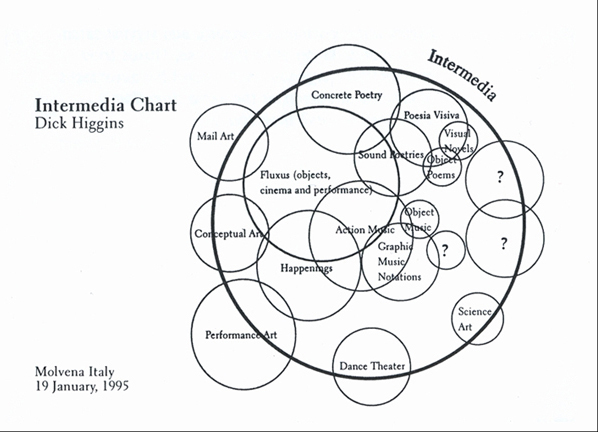 Figure 1. Dick Higgins, “Intermedia Chart,” 1995. Courtesy Fondazione Bonotto, Fluxus Collection.
Figure 1. Dick Higgins, “Intermedia Chart,” 1995. Courtesy Fondazione Bonotto, Fluxus Collection.
¶ 2 Leave a comment on paragraph 2 0 Fluxus was an international movement of artists, composers, writers, and filmmakers who worked together primarily during the 1960s and 1970s. The group’s members are famous for their creation of ephemeral and genre-blurring “intermedia” artworks, provocative performance events, and what they dubbed the “Eternal Network”—an international syndicate of collaborating, agitating, pranksterish artmakers.
¶ 3 Leave a comment on paragraph 3 0 The University of Iowa Libraries houses one of the most impressive collections of Fluxus art and ephemera in the United States, including works by internationally acclaimed artists Ken Friedman, John Cage, Dick Higgins, George Maciunas, Yoko Ono, Mieko Shiomi, Nam June Paik, George Brecht, Robert Filliou, and many others. The collection is the centerpiece of Alternative Traditions in the Contemporary Arts (ATCA), a project founded in 1982 by Estera Milman to preserve artifacts related to the post-World War II avant-garde.
¶ 4 Leave a comment on paragraph 4 0 To date, Fluxus is widely considered one of the most significant art movements of the post-World War II era, and yet the group’s work remains by far the least available to readers in comparison with Pop, Minimalist, and Conceptual art.
¶ 5 Leave a comment on paragraph 5 0 The following photographs give some indication as to why:
¶ 6 Leave a comment on paragraph 6 0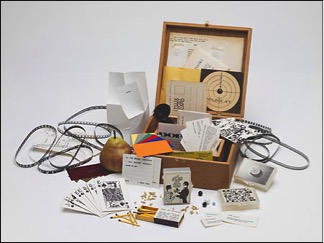 Figure 2. George Maciunas, Flux Year Box II, 1968. Courtesy UI Libraries, ATCA Collection.
Figure 2. George Maciunas, Flux Year Box II, 1968. Courtesy UI Libraries, ATCA Collection.
¶ 7 Leave a comment on paragraph 7 0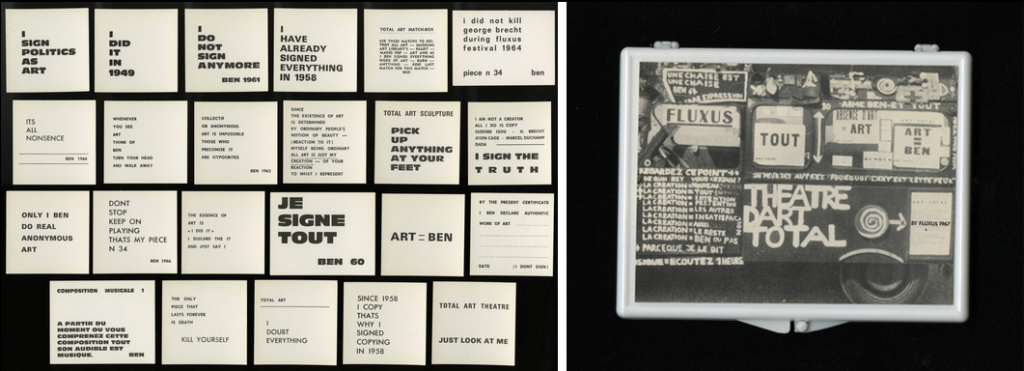 Figures 3 and 4. Ben Vautier, Theater D’Art Total, 1976. Courtesy UI Libraries, ATCA Collection.
Figures 3 and 4. Ben Vautier, Theater D’Art Total, 1976. Courtesy UI Libraries, ATCA Collection.
¶ 8 Leave a comment on paragraph 8 0 Multiples, performance scores, film reels, photographs, paper works of irregular dimensions—the list goes on. The ephemeral nature and multimedia-intensive quality of so much Fluxus art makes it inappropriate for conventional exhibition. Imagine yourself in a gallery space. Flux Year Box II would appear behind a plate glass case; you might view the work, but would not be free to read it. Now imagine yourself reading a book catalogue; it would offer secondary context and supplementary information, but could reproduce only a fraction of a single work alone, while most multimedia components would be lost. Maciunas’s work contains a novella-length body of content that very few have had the opportunity and privilege to read, view, and hear in full.
¶ 9 Leave a comment on paragraph 9 0 In response to this challenge, we developed a plan to bring the work of an essential post-World War II art movement to larger audiences worldwide. The Fluxus Digital Collection (FDC) is one of the first comprehensive archives of the group’s artwork, ephemera, and criticism; it contains an interactive map of the movement’s innovative “Flux events,” digital 3D objects, documentary shorts, and secondary resources. Of course, no representation can replace the material object, but it can restore moving images, the reading experience, and audio components otherwise inaccessible to viewers. In this way, I hope the FDC might become an invaluable supplement to the physical collection.
¶ 10 Leave a comment on paragraph 10 0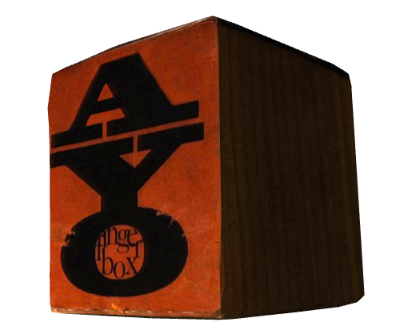 Figure 5. Ay-O, Finger Box, ca. 1964. 3D rendering. Courtesy UI Libraries, ATCA Collection.
Figure 5. Ay-O, Finger Box, ca. 1964. 3D rendering. Courtesy UI Libraries, ATCA Collection.
¶ 11 Leave a comment on paragraph 11 0 After launching the website in 2015, it became immediately clear that the collection offered a useful case study for developing long-term, open-source collaborations in digital humanities research involving librarians, faculty, students, and technologists.
¶ 12 Leave a comment on paragraph 12 0 The project involved a substantial collaborative undertaking by partners including the Digital Studio, UI Libraries Special Collections (Sp. Coll.), Digital Research and Publishing (DRP), along with Digital Preservation and Conservation.1 Together we identified several intersecting workflows: (i) rights management, (ii) collection processing, (iii) conservation, (iv) photography and film, (v) 3D modeling, (vi) 2D scanning, (vii) digital preservation, (viii) website development, (ix) and website design. Notably, a single object might require several production workflows; the Fluxus Yearbox II, for instance, needed film, scanning, and photography. Documenting the metadata on digital files proved to be a challenging task, since many “Fluxkits” contain objects nested inside objects, and so on.
¶ 13 Leave a comment on paragraph 13 0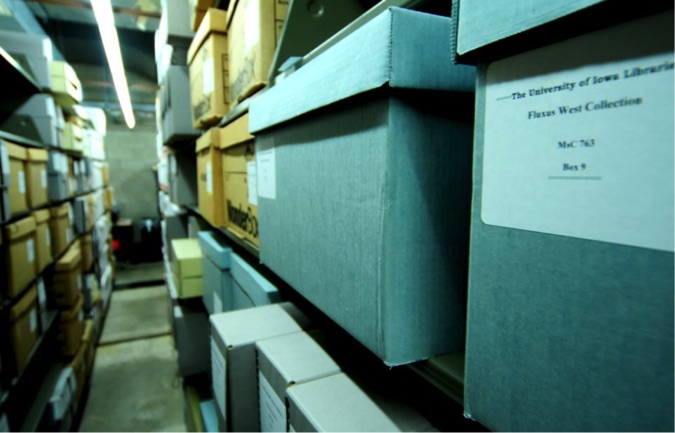 Figure 6. University of Iowa Libraries’ “Fluxus West Collection” forms part of ATCA and comprises the majority of works featured in the Fluxus Digital Collection. Photograph by Greg Prickman.
Figure 6. University of Iowa Libraries’ “Fluxus West Collection” forms part of ATCA and comprises the majority of works featured in the Fluxus Digital Collection. Photograph by Greg Prickman.
¶ 14 Leave a comment on paragraph 14 0 Given the project’s complexities, it is imperative to recognize the contributions of librarians, technologists, and designers whose work counts as original research and invaluable support, beyond what I can provide the project. In a word, they do something I definitely cannot. Whatever “best practices” model we finally adopt for digital humanities research, it should carefully acknowledge and meticulously document individual contributions and shared labor. These key individuals built the FDC, along with an infrastructure for future archiving projects at UI Libraries:
Hannah Scates—Project Management
Nikki White—Programming & Development
Audrey Altman—Programming & Development
Heidi Bartlett—Design
Greg Prickman—Special Collections, Head
Emily Shaw—Digital Preservation
Candida Pagan—Scanning, Art Arrangement
Giselle Simon—Digital Conservation
Peter Balestrieri—Research Assistance
Graduate students in the New Media Poetics (English 6080) course
¶ 16 Leave a comment on paragraph 16 0 I write from the perspective of a faculty member, whose position in the project is comparable to that of a “principal investigator” in the sciences. I wish to see much more of this type of collaborative work, drawing on our unique skills and collective creativity to produce resources that none of us alone could have built otherwise. That said, I believe we should forego the strict hierarchies of authority that many laboratories adopt, opting instead for lateral exchanges between libraries, departments, and IT units.
¶ 17 Leave a comment on paragraph 17 0 Fluxus, it turns out, may show us the way:
¶ 18 Leave a comment on paragraph 18 0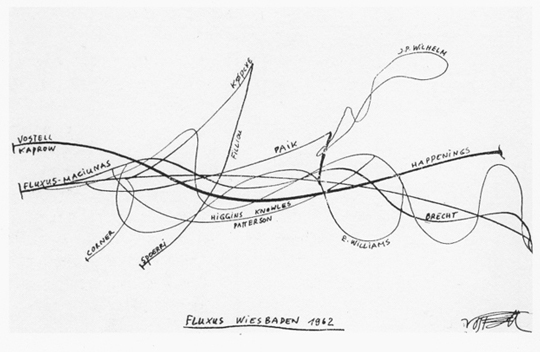 Figure 7. Wolf Vostell, “Fluxus Wiesbaden 1962,” 1962. Courtesy Stendhal Gallery Online Archive.
Figure 7. Wolf Vostell, “Fluxus Wiesbaden 1962,” 1962. Courtesy Stendhal Gallery Online Archive.
¶ 19 Leave a comment on paragraph 19 0
¶ 20 Leave a comment on paragraph 20 0 Figure 8. Nam Jun Paik, “Fluxus Island in Decollage Ocean,” 1963. Courtesy UI Libraries, ATCA Collection.
Figure 8. Nam Jun Paik, “Fluxus Island in Decollage Ocean,” 1963. Courtesy UI Libraries, ATCA Collection.
¶ 21 Leave a comment on paragraph 21 0
Stephen Voyce
Associate Professor of English – University of Iowa
Footnotes
License
This work is licensed under a Creative Commons Attribution 4.0 International License.
Share